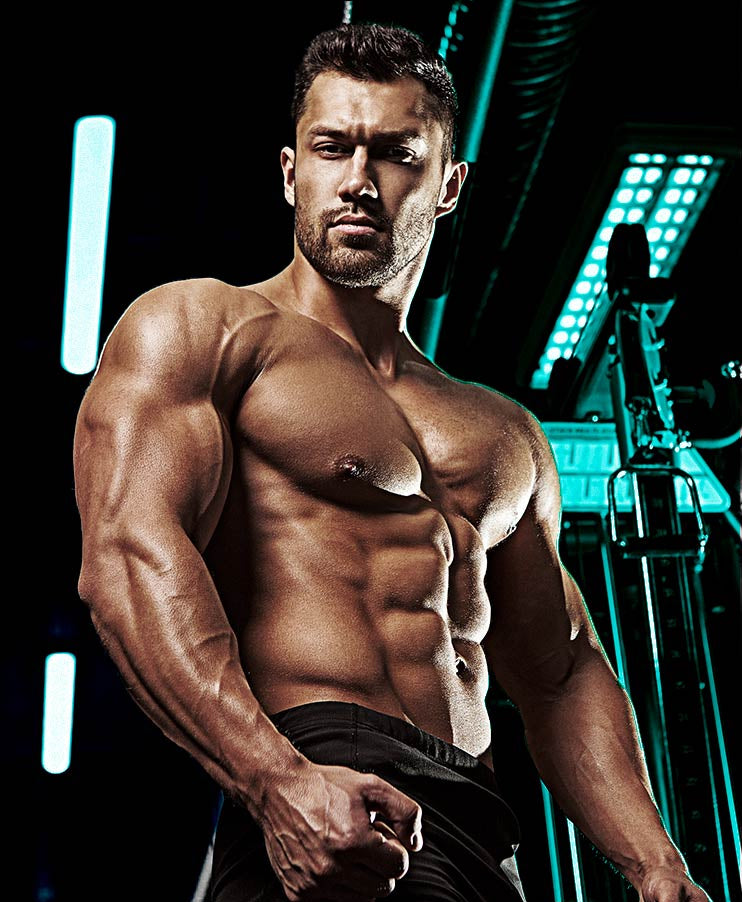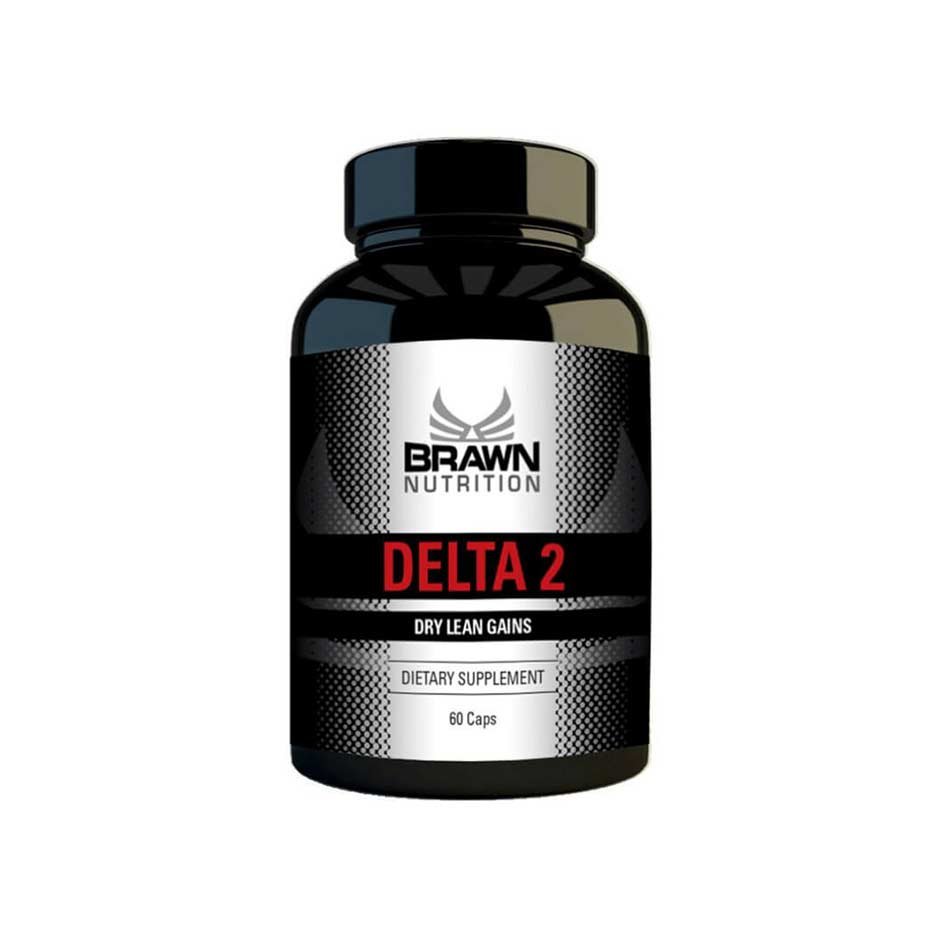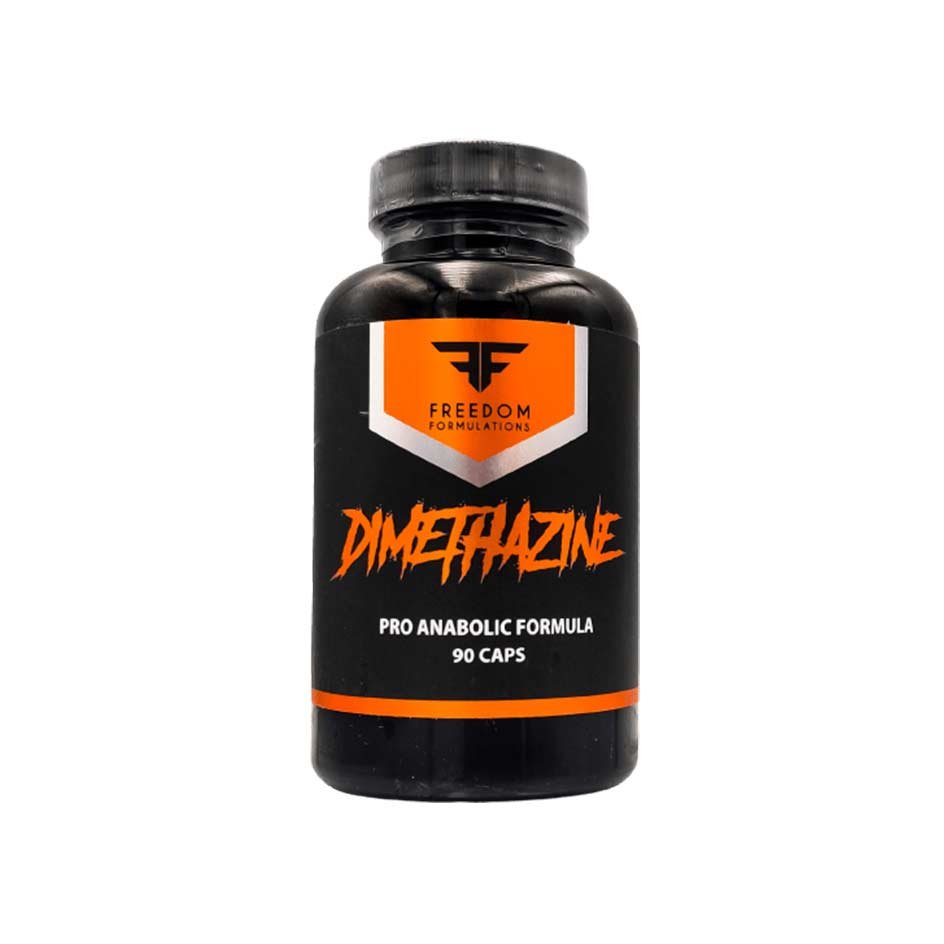What are prohormones?
The term "prohormones," which includes the word "hormones," already reveals something about what they are: Prohormones are hormone precursors. They are converted in the body into active hormones – preferably those with a muscle-building effect. The conversion process occurs with the help of the body's own enzymes, which limit the conversion rate and thus also the muscle-building effect. Prohormones are therefore less anabolic than steroids, but their side effects are also less severe. However, there are prohormones that are just as potent as steroids. These improve appearance (including definition) and performance in a very short time. However, they also have the same side effects as steroids.
Effect: How do prohormones work?
If you take prohormones, e.g., in capsules, your body converts them into the hormones testosterone, dihydrotestosterone, or 19-nortestosterone (depending on the prohormone version) using its own enzymes. Which enzyme is used depends on the molecular structure of the respective prohormone: Prohormones ending in "-dione," for example, are converted by the enzyme 17-beta-hydroxysteroid dehydrogenase, while prohormones ending with "-diol" are converted by the enzyme 3-beta-hydroxysteroid dehydrogenase. The higher the testosterone level, the more testosterone is subsequently converted into the female sex hormone estrogen or estradiol. "Dione" prohormones can even convert directly into estrogen—they don't even need to be converted into testosterone. In terms of potential side effects, they are therefore far riskier than other prohormones. The increased testosterone level following prohormone administration causes a number of welcome effects, including:
- higher protein synthesis rate (= faster muscle building)
- Strength increase
- Increase in the number of red blood cells (= improved oxygen transport)
- Intracellular water retention – resulting in fuller muscles (but also, for example, a slightly swollen face)
- shortened recovery time
- stronger libido
Opinions differ as to the extent of these welcome effects. Early studies on prohormones, such as the
by T. Ziegenfuss in the early 2000s, came to the conclusion that prohormone doses below 300 mg per day have no significant effects on body composition and athletic performance [1]. Instead, a downregulation of endogenous testosterone production and an unfavorable shift in blood lipid levels were reported – the typical side effects of a steroid regimen [2]. But why should prohormone use only result in prohormone side effects without the slightest positive effect? The prohormones available at that time were
- Androstenedione
- 4-Androstenedione-/diol,
- 5-Androstenedione-/diol and
- Dehydroepiandrosterone.
More recent studies, some of which were conducted with newer and more effective preparations, showed that prohormones do indeed have a significant anabolic effect [3]. And with the inclusion of prohormones on the WADA list of prohibited substances in 2004 (prohormones were included in category S4, "Anabolic Steroids"), it became clear that these products are highly effective in terms of performance enhancement.
History of prohormones: How long have prohormones existed?
The first prohormones came onto the market in the mid-1990s. Initially, there was only androstenedione, followed by better preparations such as 4-androstenediol and 5-androstenediol. However, the effectiveness of these early preparations was generally not particularly good because they were largely neutralized by the liver before they could take effect. In 2003, the manufacturer Legal Sciences (formerly Legal Gear) released a methylated version of 1-testosterone, namely methyl-1-testosterone (M1T). Thanks to the methylation, the preparation survived the first-pass effect in the liver and worked accordingly well. However, the methylation also made MIT liver toxic.
After WADA classified prohormones as doping agents, the American FDA sought to completely ban them. In 2005, President Bush finally signed theAnabolic Steroid Control Act of 2004, which banned the marketing of anabolic steroids in the United States. The Anabolic Steroid Control Act equated prohormones with anabolic steroids.
Variants: Which prohormones are there?
Despite the Anabolic Steroid Control Act, a multitude of prohormones are still offered online. Listing them all is almost impossible – especially since many prohormone substances have different names and chemical designations. The most well-known prohormone products are the following (names may vary depending on the manufacturer):
11-Ketotestosterone (11-Keto-Androstenedione, 11-Andro, 11-Oxo)
11-Ketotestosterone is a relatively weak prohormone, but it can be very effective in reducing cortisol release. This makes it especially suitable for strength athletes who train very hard. 11-Ketotestosterone does not convert to estrogen and has hardly any significant side effects. It is also not methylated, meaning it does not put a strain on the liver. The disadvantage is that you have to take it several times a day and over many weeks to achieve any effect.
Androsterone (1-DHEA, 1-Androsterone,1-Andro)
This prohormone is converted in the body into a subtype of testosterone known as "l-testosterone" or "dihydroboldenone." The hormone has a weak androgenic and very weak anabolic effect; its anabolic effect is approximately one-seventh that of testosterone. Because androsterone is also found in pine pollen, it can be legally sold as a dietary supplement.
Epistane (Epitiostanol, Mepitiostane, Havoc)
Epistane was originally developed in Japan to treat breast cancer in women. It's not actually an anabolic steroid, but rather a potent anti-estrogen; nevertheless, it does have some muscle-building effects. It doesn't aromatize and, due to its anti-estrogen effect, has a dehydrating effect, which is why it's often taken for weight loss. Epistane actually creates a hard, "dry" look. (However, Epistane is not a fat burner, as is often claimed.)
Halodrol (H-Drol, Halo, HD)
Halodrol, first launched by Gaspari Nutrition in 2006, is a very potent and therefore extremely popular prohormone. Its structure is similar to the oral steroid Oral Turinabol, which was primarily used in the former GDR. Halodrol is considered highly effective in terms of muscle building and performance enhancement, and it has relatively few side effects.
Superdrol (Methyldrostanolone, S-Drol)
Superdrol is by far the most potent prohormone. Its effect is comparable to, or even more effective than, the steroid drostanolone. Superdrol is therefore often classified as a "genuine" oral steroid. Superdrol allows you to achieve a muscular and defined look within a few weeks; however, Superdrol use also comes with severe side effects. Superdrol is not recommended for purely recreational athletes.
Trenavar (Trendione, Tren)
This prohormone is often referred to as "oral trenbolone," and indeed, it works similarly to the steroid trenbolone (albeit with less potent effects). Unfortunately, its side effects also match the very broad spectrum of trenbolone's side effects.
Prohormone side effects: What are the most common side effects of prohormones?
There's no doubt that prohormones have side effects. However, due to the many different types of prohormones that now exist, it's difficult to make general statements about side effects. Generally speaking, the more potent a prohormone is, the more severe the side effects. Weak prohormones, such as 11-ketotestosterone, also have only mild side effects; strong prohormones, on the other hand, can have very unpleasant side effects.
Side effects caused by aromatization, the conversion of testosterone into estrogen, are not uncommon. These include nipple itching or gynecomastia in men, water retention, and increased blood pressure. Furthermore, virtually all prohormones have a suppressive effect—meaning they cause the body to reduce endogenous testosterone production. Methylated prohormones are also liver toxic. The highly potent prohormone Superdrol does not aromatize, but it drastically worsens blood lipid levels (HDL-LDL ratio), significantly increasing the risk of stroke and heart attack. Superdrol also damages the kidneys. Anyone who simply wants to improve their fitness and is not involved in competitive bodybuilding should definitely stay away from Superdrol.
In general, it is recommended not to take prohormones for longer than 4 to 6 weeks to avoid severe liver damage and excessive cardiovascular risk. Afterward, a break of at least 2 months should be taken.
Target group: Who should take prohormones?
Prohormones for beginners
Prohormones are not for beginners – period. Within the first three years of training, every beginner can
harmless supplements (such as creatine orTurkesteroneor ecdysterone) to quickly build muscle mass.
Prohormones for women
Since virtually every prohormone causes a temporary increase in testosterone levels in the body (with the possible exception of Epistane),
Prohormone use for women is a double-edged sword. There's a risk of masculinization symptoms similar to those associated with anabolic steroids. Women who still want to take prohormones should always limit themselves to half the dosage recommended on the packaging.
Prohormones for advanced bodybuilders
Bodybuilders who have been "building" for a few years are the real target group for prohormones: Once the limit of natural muscle growth has been reached (this usually occurs after 3 to 5 years), prohormones can still bring about further progress. How sustainable these improvements are is another question. You have to expect that some of the muscle gains achieved will be lost again after discontinuing prohormones.
Prohormones for muscle building: What can you expect?
Prohormones aren't miracle cures, even the most effective ones. You won't be able to build more than 2 to 3 kg of muscle mass with prohormones. This is partly because prohormones don't increase testosterone levels that much, and partly because you can't take them for long (without risking serious liver damage). On the other hand, three kilograms of muscle mass is more than some natural bodybuilders build in an entire year. If you can build that mass with prohormones in six weeks, it's a very attractive prospect.
Legal situation: Are prohormones legal?
The days when prohormones were legal (or not banned) ended in the early 2000s. Prohormones are no longer legal within the EU or the US, but you can still buy them here. Prohormones are theoretically easily available anywhere in the world online.
Procurement: Where can you buy prohormones?
Buying prohormones is risky. However, the problem is less the authorities than fraudulent sellers and fake shops. Because the legal situation regarding prohormones prevents cheated buyers from filing official complaints against the seller, there are many bad apples among the sellers. The only solution is to research the shop you're considering online beforehand.
It should also be noted that the use of prohormones always constitutes a violation of WADA's anti-doping guidelines [4]. Athletes participating in doping-tested competitions must therefore be aware that they risk a positive test result if they take prohormones.
- Tim N. Ziegenfuss et al. (2002): “Effects of prohormone supplementation in humans: a review” – Can J Appl Physiol (https://pubmed.ncbi.nlm.nih.gov/12501001/)
- CE Broeder (2000): “The Andro Project: physiological and hormonal influences of androstenedione supplementation in men 35 to 65 years old participating in a high-intensity resistance training program” – Arch Intern Med. (https://pubmed.ncbi.nlm.nih.gov/11074738/)
- J. Granados (2014): “Prohormone supplement 3β-hydroxy-5α-androst-1-en-17-one enhances resistance training gains but impairs user health”
(https://pubmed.ncbi.nlm.nih.gov/24381122/) - wada-ama.org (2005): The detection and confirmation of androstenediol abuse in athletes (https://www.wada-ama.org/en/resources/scientificresearch/detection-and-confirmation-androstenediol-abuse-athletes)















